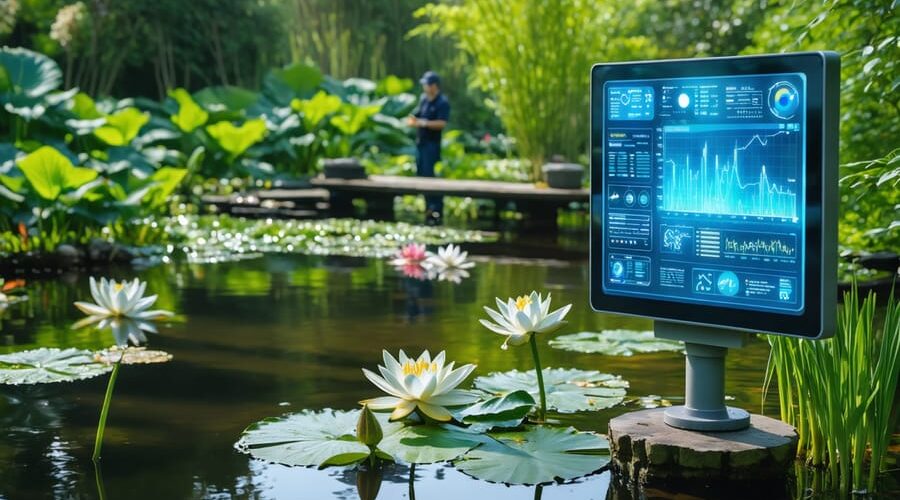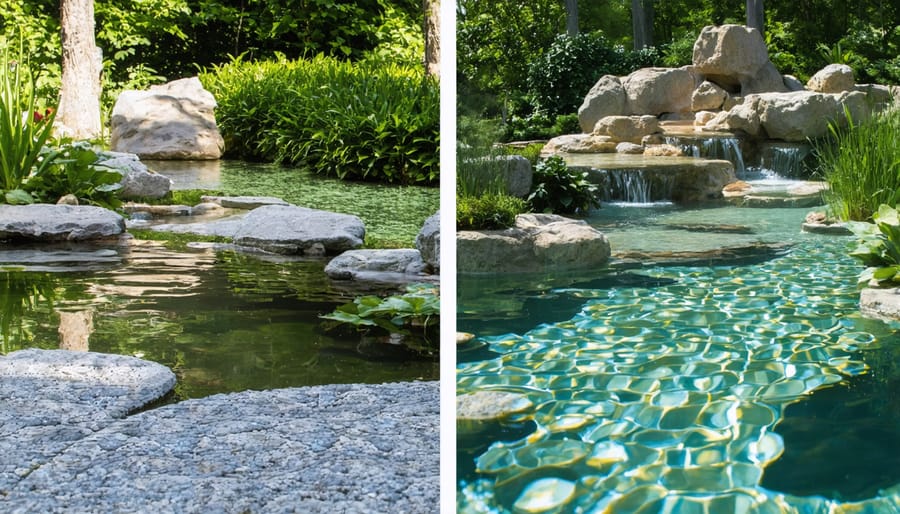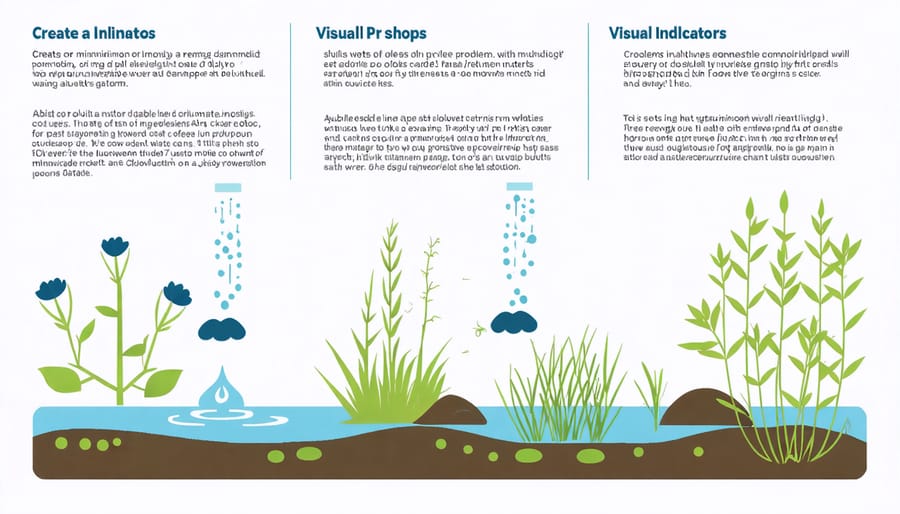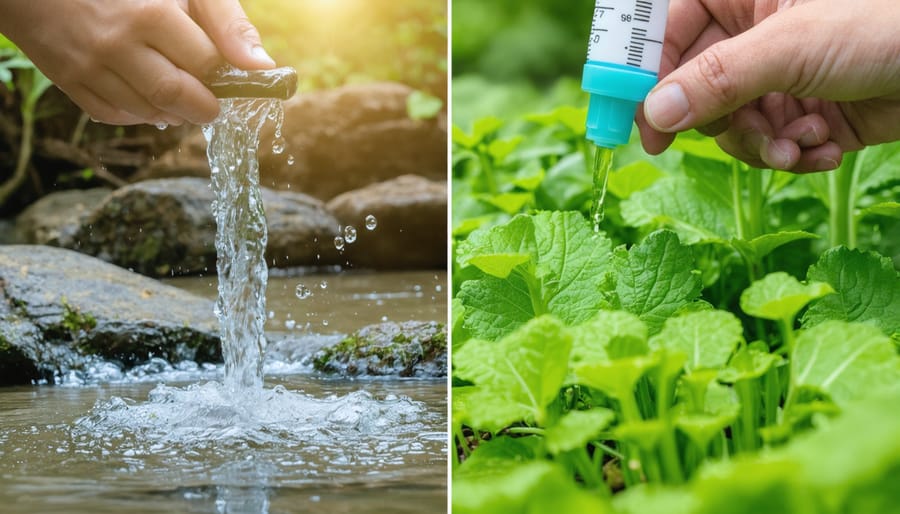
Fix Your Water Garden Problems (Expert Panel Solutions That Work)
Transform your garden from a source of stress into a thriving oasis by mastering the art of problem-solving in your outdoor sanctuary. Whether you’re battling persistent weeds, struggling with soil quality, or facing mysterious plant diseases, every garden challenge has a solution waiting to be discovered. Today’s gardeners face an increasingly complex set of obstacles, from climate change-induced weather patterns to new pest varieties, making it more crucial than ever to develop a systematic approach to garden troubleshooting.
Expert gardeners know that success lies not just in identifying problems, but in understanding the interconnected nature of garden ecosystems. A brown leaf might signal anything from improper watering to nutrient deficiency, while declining plant health could stem from soil composition issues or hidden pest infestations. By learning to read these signs and implement targeted solutions, you’ll develop the confidence to tackle any garden challenge head-on.
In this comprehensive guide, we’ll explore the most common garden problems and provide practical, proven solutions that work for gardens of all sizes. From diagnostic techniques to preventive measures, you’ll discover how to protect your garden investment and ensure your plants thrive year after year. Let’s dig into the root causes of garden issues and unearth the secrets to maintaining a healthy, vibrant garden space.
Understanding Water Garden Problem-Solving Panels
What Are Water Garden Panels?
Water garden panels are specialized problem-solving tools designed to help pond owners and water gardeners maintain healthy, balanced aquatic environments. These panels typically come in two main formats: physical diagnostic charts and digital monitoring systems. Physical panels are waterproof, weather-resistant displays that provide quick reference guides for common water garden issues, while digital panels offer real-time monitoring of water quality parameters.
Most basic panels include sections for water quality assessment, plant health indicators, and fish behavior monitoring. More advanced systems might feature integrated sensors that track pH levels, temperature, and dissolved oxygen content. Some popular options include floating panels that work directly in the water and wall-mounted versions that can be installed near your pond for easy access.
For DIY enthusiasts, modular panels are available that let you customize your monitoring setup based on your specific needs. These can be particularly helpful for larger water gardens or those with multiple water features. Whether you’re dealing with algae problems, maintaining proper filtration, or managing aquatic plants, these panels serve as valuable diagnostic tools that help you identify and resolve issues before they become serious problems.
Benefits of Using Expert Panels
Consulting expert panels for water garden issues offers several valuable benefits that can save you time, money, and frustration. These knowledgeable groups typically consist of experienced horticulturists, pond specialists, and water feature designers who bring diverse perspectives to your gardening challenges.
One of the main advantages is getting multiple expert opinions simultaneously, rather than piecing together advice from various sources. These professionals can identify complex issues that might not be apparent to the average gardener, such as underlying water chemistry problems or hidden structural concerns.
Expert panels often provide customized solutions based on your specific situation, considering factors like your local climate, existing garden layout, and maintenance capabilities. They can also alert you to potential future problems before they develop, helping you take preventive measures.
Additionally, panel discussions frequently introduce innovative solutions and new techniques that haven’t yet become widely known in the gardening community. This access to cutting-edge information can help you maintain a healthier, more vibrant water garden while avoiding common pitfalls that many DIY enthusiasts encounter.
Remember that expert panels can also help you understand the long-term implications of different solutions, ensuring you make informed decisions about your water garden’s future.


Common Water Garden Problems and Panel Solutions
Water Quality Issues
Maintaining clear, healthy water in your garden pond can sometimes feel like a juggling act. Water quality issues often arise from multiple factors, but don’t worry – there are straightforward solutions for each challenge you might face.
For cloudy water, start by checking your filtration system. A properly sized filter should handle your pond’s volume, typically processing the entire water body every two hours. If cloudiness persists, consider adding beneficial bacteria to help break down excess organic matter.
Algae blooms can turn your pristine pond into a green soup overnight. Combat this by ensuring your pond has adequate shade (about 50-60% surface coverage) and installing an UV clarifier. Adding floating plants like water lilies helps reduce nutrients that fuel algae growth while adding natural beauty to your pond.
Chemical balance is crucial for healthy pond life. Test your water weekly using a reliable testing kit to monitor pH, ammonia, and nitrite levels. Aim for a pH between 6.8 and 7.8 for most pond fish. If levels are off, use appropriate water treatments, but remember to introduce them gradually to avoid shocking your aquatic friends.
Remember to remove fallen leaves and debris regularly, as decomposing organic matter can quickly throw off your water’s balance. A simple skimmer net used daily can prevent many water quality problems before they start.
Plant Health Concerns
When it comes to maintaining healthy aquatic plants, recognizing and addressing health concerns early is crucial for successful aquatic plant management. Common issues include yellowing leaves, stunted growth, and algae overgrowth, which can signal underlying problems with water quality or nutrient levels.
Expert panels recommend regular monitoring of your plants for signs of stress or disease. Look for discolored spots on leaves, wilting, or unusual growth patterns. If you notice these symptoms, test your water parameters immediately, as pH imbalances and nutrient deficiencies are often the root cause of plant health issues.
For submersed plants showing signs of decline, check for adequate light exposure and ensure they’re planted at the correct depth. Floating plants might struggle if water movement is too strong or if they’re overcrowded. Remember that different species have varying needs – what works for lilies might not suit marginal plants.
Prevention is always better than cure. Maintain proper fertilization schedules, remove dead plant material promptly, and ensure good water circulation. If problems persist, consider quarantining affected plants in a separate container while treating them. This prevents issues from spreading to healthy specimens and gives you better control over treatment conditions.
Don’t hesitate to document changes in plant health with photos – this can help track progress and identify seasonal patterns in your water garden’s ecosystem.
Fish Care Challenges
Maintaining healthy fish in your garden pond requires careful attention and proactive care. Common challenges include parasitic infections, oxygen depletion, and stress-related illnesses. To keep your finned friends thriving, monitor water quality daily and look for signs of distress like gasping at the surface or unusual swimming patterns.
One of the biggest hurdles pond owners face is maintaining proper water chemistry. Regular testing for ammonia, nitrites, and pH levels is essential. If fish appear lethargic or lose appetite, these parameters might be off balance. Adding beneficial bacteria can help stabilize the ecosystem and prevent sudden chemical fluctuations.
Overcrowding is another frequent issue that leads to health problems. Follow the general rule of one inch of fish per ten gallons of water. Remember that fish grow larger over time, so plan accordingly when stocking your pond. Provide adequate filtration and ensure proper water circulation to prevent dead spots where harmful bacteria can flourish.
During seasonal changes, fish are particularly vulnerable. Gradually adjust feeding schedules and monitor temperature fluctuations. Install a pond thermometer and consider adding a winter heater in colder climates. Create deeper areas in your pond (at least 4 feet) to give fish a safe retreat during extreme weather.
Prevention is always better than cure. Regular maintenance, careful observation, and quick response to potential problems will help ensure your fish remain healthy and active throughout the year.
Structural and Equipment Problems
Structural and equipment issues can quickly turn your peaceful water garden into a source of frustration. Let’s tackle common problems and their solutions. For liner concerns, check for visible tears or holes by examining water levels – a sudden drop might indicate a leak. Small tears can be patched with specialized pond repair kits, while larger damages may require professional replacement.
Pump troubles often manifest as reduced water flow or complete failure. Start by cleaning the pump intake of debris and checking the impeller for blockages. If your pump runs but doesn’t move water, air might be trapped – try tilting the pump slightly while submerged. Regular maintenance, including quarterly cleaning, can prevent most pump issues.
When it comes to filtration solutions, poor water quality usually points to system problems. Clean or replace filter media regularly, and ensure your filter size matches your pond volume. Watch for bypass issues where water skips the filtration process entirely. If your filter seems overwhelmed, consider adding biological media or upgrading to a larger system.
Remember to inspect equipment seals and connections seasonally. Loose fittings can cause leaks and reduce efficiency. During winter, protect exposed pipes and equipment from freezing, and consider using a floating de-icer in colder climates to prevent ice damage to your system components.
Implementing Panel Recommendations
Step-by-Step Problem Resolution
Once you’ve received advice from a garden expert panel, implementing their solutions effectively is crucial for success. Start by documenting all recommendations in a garden journal, organizing them by priority and seasonality. This helps you create a clear action plan without feeling overwhelmed.
Begin with the most urgent issues first. For example, if you’re dealing with plant diseases, implement immediate treatment measures before tackling aesthetic concerns. Create a timeline for each solution, considering factors like weather conditions and growing seasons.
Break down complex solutions into smaller, manageable tasks. If you’re redesigning a garden bed, start with soil testing, then move on to drainage improvements, and finally tackle plant selection. This systematic approach ensures nothing gets overlooked.
Keep detailed records of your progress, including before and after photos. This visual documentation helps track improvements and identifies what works best in your specific garden environment. Make notes about any modifications you make to the suggested solutions, as these insights can be valuable for future reference.
Don’t hesitate to reach out for clarification if certain steps seem unclear. Many garden panels offer follow-up support, and it’s better to ask questions than risk implementing solutions incorrectly. Remember to monitor results regularly and adjust your approach if needed.
Share your success stories and challenges with other gardeners in your community. This feedback loop not only helps others but also provides valuable insights for future problem-solving. Consider joining local gardening groups where you can discuss your experiences and learn from others who’ve implemented similar solutions.

Maintaining Long-Term Solutions
Once you’ve identified and solved your garden issues using expert panel guidance, maintaining those solutions is crucial for long-term success. Regular monitoring and preventive care are essential aspects of water garden maintenance techniques that help avoid future problems.
Start by creating a maintenance calendar that aligns with seasonal changes. During spring and summer, check water quality weekly and inspect plants for signs of stress or disease. In autumn, remove fallen leaves promptly to prevent decomposition in the water, and prepare your garden for winter by trimming back overgrown vegetation.
Keep detailed records of any issues you encounter and the solutions that worked best. This personal garden journal becomes an invaluable resource for spotting patterns and preventing problems before they escalate. Include notes about water tests, plant growth, and any wildlife observations.
Consider implementing preventive measures based on past experiences. If algae was a previous concern, install additional plants that compete for nutrients. For persistent pest problems, introduce beneficial insects or create natural barriers. Remember that a healthy ecosystem is your best defense against common garden issues.
Don’t forget to regularly review and update your maintenance routine based on your garden’s specific needs. What works in one season might need adjustment in another. Stay connected with your local gardening community and expert panels for updates on best practices and new solutions. By maintaining open communication and staying proactive, you’ll create a thriving, problem-free water garden that brings joy year after year.
Problem-solving panels have proven to be invaluable resources for water garden enthusiasts facing challenges in their outdoor havens. By bringing together experienced gardeners, technical experts, and fellow hobbyists, these panels offer practical solutions that can save time, money, and unnecessary stress. Whether you’re dealing with algae blooms, pump malfunctions, or maintaining proper water chemistry, there’s incredible value in tapping into this collective wisdom.
Remember that no question is too basic or complex for these helpful communities. Many gardeners who once struggled with similar issues are now thriving thanks to the guidance they received through these panels. The collaborative nature of these forums means you’ll often get multiple perspectives and solutions, allowing you to choose the approach that best fits your situation.
Don’t hesitate to reach out to these panels when you encounter problems in your water garden. Take photos, provide detailed descriptions, and engage actively with the community. The more information you share, the better advice you’ll receive. Also, consider staying involved even after your issue is resolved – your experience could help someone else facing similar challenges.
With the right support system in place, maintaining a beautiful and healthy water garden becomes much more manageable. These problem-solving panels are more than just troubleshooting resources; they’re communities of passionate gardeners ready to help you succeed in your water gardening journey.
